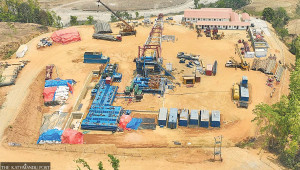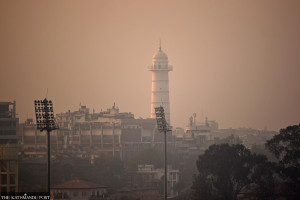Money
NAC’s new Airbus to arrive at TIA on Feb 7
Nepal Airlines Corporation (NAC) is scheduled to receive a brand new Airbus next month in what will be the carrier’s first addition to its international fleet in 27 years.
Sangam Prasain
When the A320-200 touches down at Tribhuvan Intern-ational Airport (TIA) on February 7, it will put to rest longstanding speculation over the deal going through as all of NAC’s past fleet expansion plans have ended in fiasco.
The national flag carrier said that the European aircraft maker Airbus SAS was slated to hand over one of the two A320-200 jets with registration mark 9N-AKW on February 6. The handover ceremony will take place in Hamburg, Germany. It will be flown from Hamburg to Doha and then to Kathmandu. The second jet is expected to be delivered by April.
The Airbus A320 will have 158 seats, eight in business class and the rest in economy. The aircraft is fitted with Sharklet fuel-saving wingtip devices that deliver unbeatable economics and up to 4 percent reduction in fuel burn.
On June 27, 2013, NAC had confirmed its order for two Airbus planes by signing an aircraft purchase agreement with Airbus. NAC’s aircraft procurement process had succeeded after a hiatus of six years. It currently possesses two ageing Boeing 757s.
The first of Nepal Airlines two 757s arrived in September 1987 and the second one a year later. Since then, every effort to expand its international fleet has failed.
Madan Kharel, managing director of NAC, said that the jet would begin commercial operations on February 20.
Its first flight will be to Delhi. Last year, NAC formally ceased its Kathmandu-Delhi services due to lack of planes. According to him, initially there will be four flights per week on the Kathmandu-Delhi sector.
The frequency will be increased to at least two flights daily. The corporation will also be resuming flights on the Kathmandu-Bangalore sector after a long break.
Similarly, NAC will put the brand new Airbus on the Kathmandu-Hong Kong sector as aircraft serving the island are required to be fitted with the Required Navigation Performance (RNP) system. NAC’s old Boeing 757s do not have the system.
RNP is the latest satellite-linked landing and navigation system designed to improve safety and on-time performance. Aircraft fitted with RNP can safely navigate around cloud shrouded mountains, through valleys and over high terrain when low visibility would normally close an airport.
Kharel said as the new aircraft can complete trips of over 7-8 hours in the beginning, they have no plans
to expand to other markets
for now.




 24.73°C Kathmandu
24.73°C Kathmandu














